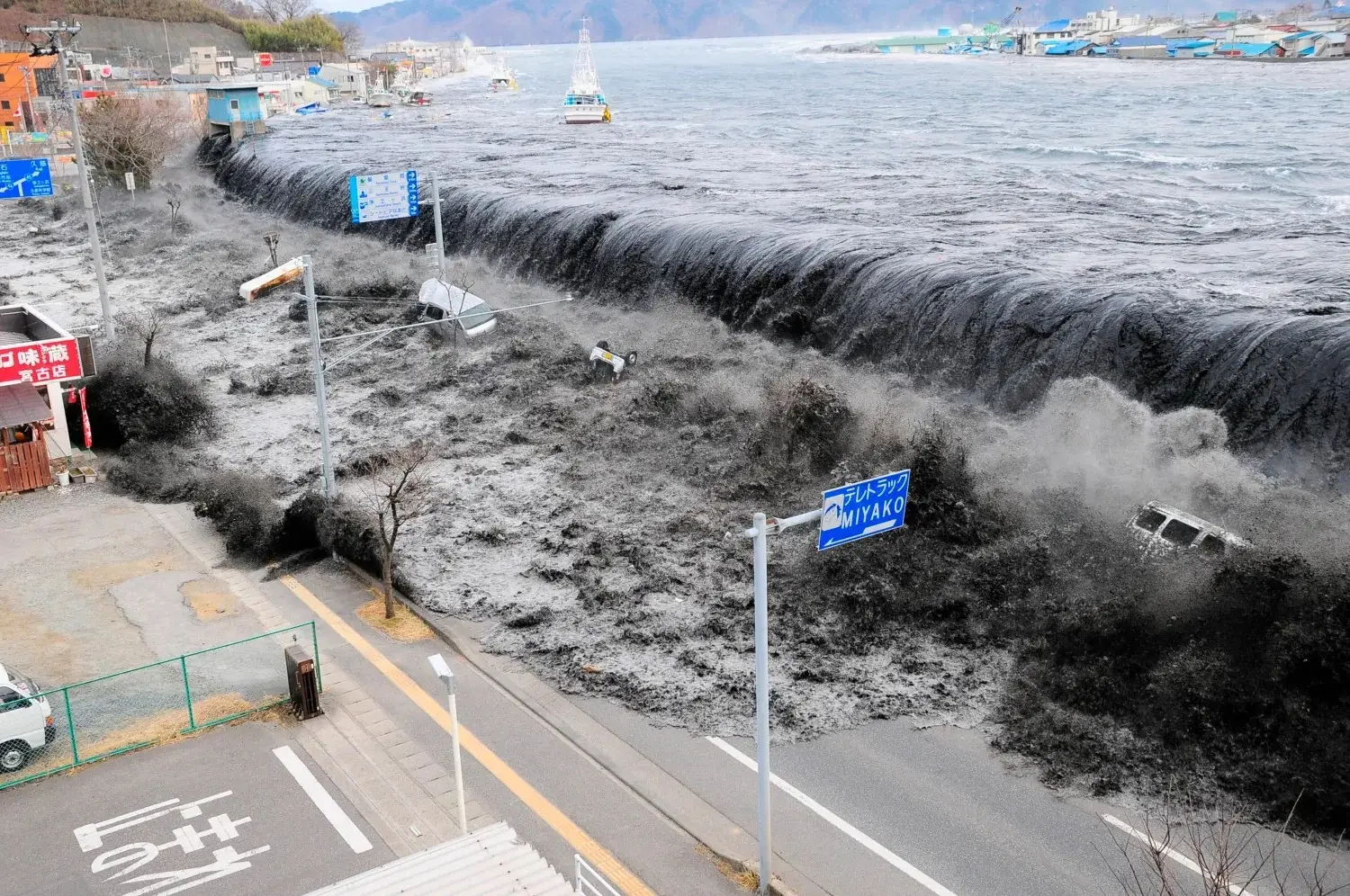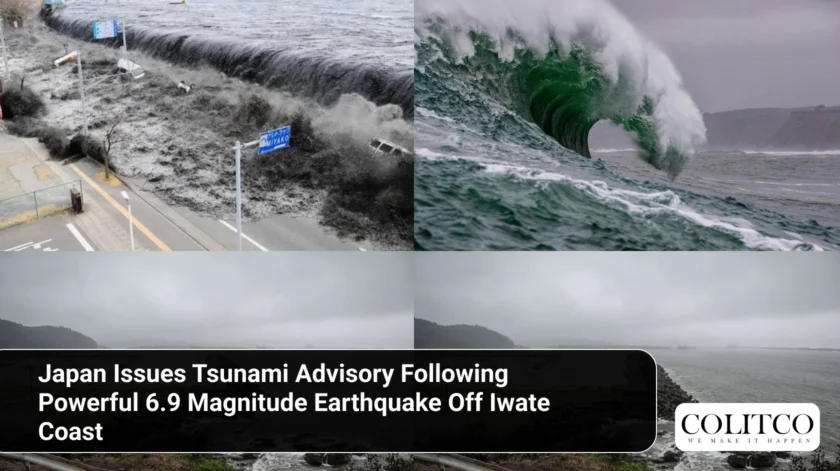A powerful earthquake struck off the northern coast of Japan on Sunday evening, causing disruption and prompting immediate action from authorities. The Japan Meteorological Agency issued a tsunami advisory shortly after the event, advising people along the coast to evacuate and monitor official information for updates.
Earthquake Shakes Iwate Prefecture
The earthquake registered a magnitude of 6.9, according to revised reports from local agencies. It occurred at 5:03 p.m. local time at a depth of approximately 16 kilometres. The seismic activity centred near the Iwate Prefecture, with the initial quake followed by several aftershocks throughout the evening. Authorities documented intensities reaching level 4 on the Japanese seismic scale in Iwate and neighbouring Miyagi.
The Japan Meteorological Agency cautioned residents to expect waves measuring up to one metre, or three feet, along coastal zones. Officials then revised estimates as minor tsunami activity appeared at several points along Iwate’s coastline.

Location of the earthquake’s epicentre
Tsunami Advisory and Observations
Tsunami waves reached up to 20 centimetres, or eight inches, at Kuji and Ofunato ports in Iwate. The advisory persisted for nearly three hours, and authorities lifted it at 8:15 p.m. following reduced risk indications. Residents were urged to avoid coastal regions as waves could persist or grow due to subsequent tremors.
The Japan Meteorological Agency specified in its announcement: “At approximately 17:03, an earthquake centred on the Sanku coast. Se intensity level 4 was recorded in both Iwate and Miyagi Prefectures, and an information liaison room has been promptly established at Prime Minister Office. A tsunami advisory has been issued, so please evacuate from the coast immediately. The incoming tsunami could exceed expectations in size, so remain alert for additional information. Furthermore, aftershocks may occur, so please stay cautious of any intense shaking.” The statement highlighted the urgency and immediate steps taken by authorities.
Japan Issues Tsunami Warning After 6.7 Magnitude Earthquake Near Honshu Coast 0911025
Japan issued a tsunami advisory after a 6.7-magnitude earthquake struck offshore Iwate in northern Pacific waters Sunday. The Japan Meteorological Agency warned waves up to one metre. pic.twitter.com/30X4RB5mIh— john l (@Johnl1465045L) November 9, 2025
Disruption and Response
East Japan Railway Co. reported temporary power outages that affected the Tohoku Shinkansen line, suspending services between Sendai and Shin-Aomori. Train delays also impacted the Akita and Hokkaido Shinkansen lines. No injuries or structural damage were confirmed after the initial assessment. Nuclear facilities in the region reported no irregularities or risk associated with the earthquake or tsunami activity.
Local government agencies advised continued vigilance for aftershocks, which remained possible in the following hours and days. Minor fluctuations in sea level persisted after the warning was lifted, and authorities confirmed ongoing seismic monitoring for the affected regions.

Time, duration and magnitude of multiple earthquakes
Ongoing Precautions and Monitoring
Seismologists at the Japan Meteorological Agency continue to analyse the seismic sequence and advise vigilance. Officials urge coastal residents and local authorities to exercise caution, remain alert for official announcements, and prepare for the possibility of further aftershocks or ocean disturbances.
Prime Minister Sanae Takaichi’s directive, relayed via X, underscores the seriousness of government efforts: “An information liaison room has been promptly established at Prime Minister Office.… please evacuate from the coast immediately. The incoming tsunami could exceed expectations in size, so remain alert for additional information. Furthermore, aftershocks may occur, so please stay cautious of any intense shaking.”
17時03分頃、三陸沖を震源とする地震が発生しました。
岩手県・宮城県で震度4を観測し、直ちに情報連絡室を官邸に設置しています。
津波注意報が発令されましたので、すぐに海岸から離れてください。
今後到達する津波が予想より大きくなる可能性があるので、今後の情報に注意してください。…— 高市早苗 (@takaichi_sanae) November 9, 2025
Historical Context
Japan remains vigilant due to its earthquake-prone geography and past catastrophic events. In March 2011, the nation experienced a devastating 9.0-magnitude earthquake and tsunami, with more than 18,000 lives lost and widespread damage across several prefectures. The recent event, though less severe in scale and impact, reinforced the need for robust preparedness and immediate response mechanisms.
Data from Sunday’s quake offer a sharp contrast to historic events, with minimal physical toll and no confirmed fatalities or injuries. Temporary outages and transport disruptions formed the bulk of infrastructural impacts this time. The swift issuance and lifting of the tsunami advisory demonstrated the efficiency of Japan’s meteorological and disaster response systems.

Conclusion
Japan’s prompt response to the earthquake and associated tsunami advisory mitigated risk and assured public safety. The event caused temporary disruptions but avoided major casualties or infrastructure damage, with all warnings eventually lifted as conditions stabilised. Authorities maintain heightened monitoring and provide ongoing updates to ensure readiness while keeping communities informed, reinforcing the country’s reputation for resilience and disaster management excellence.












